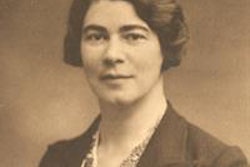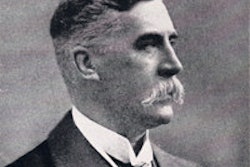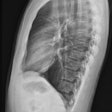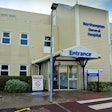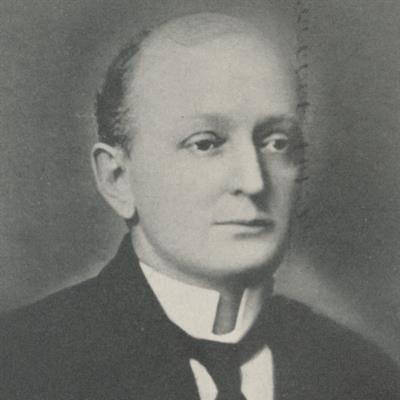
A somewhat sensational article about Thomas Edison's assistant Clarence Dally appeared recently in the Mail Online, a U.K. national newspaper.1 It referred to his "hand of death that was covered in lesions, looked burned and was falling apart after countless hours of intense x-ray radiation." However, the story is interesting enough without the need to dramatize.
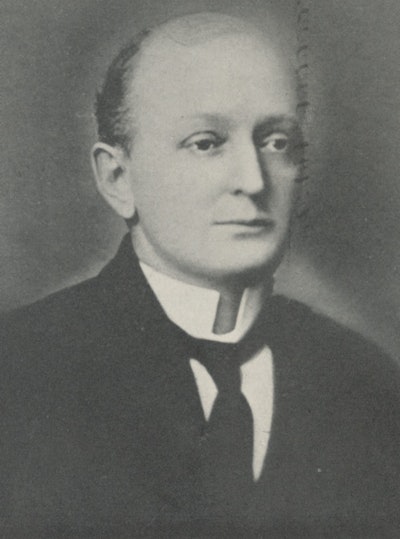 Clarence Madison Dally (1865-1904).
Clarence Madison Dally (1865-1904).Clarence Madison Dally (1865-1904) was born in New Jersey, U.S., in the final year of the American Civil War. As a young man, he joined the U.S. Navy, and he started working at the Edison Lamp Works in Harrison after discharge. Many of the Dally family, including his father and three brothers, were employed at the works. They were experts in the glasswork that was needed for the manufacture of incandescent lamps.
In 1890, Clarence moved to the Edison Laboratory in West Orange, and his brother Charles followed him five years later. The two brothers soon became Thomas Edison's most trusted assistants.
At the end of 1895, Edison became aware of the new rays discovered by Wilhelm Röntgen and interested in two areas: the x-ray focus tube and the fluorescent screen. Edison did not invent the fluoroscope but developed it, and he employed a hooded fluorescent screen that incorporated the brightly fluorescent calcium tungstate. Edison had the interesting idea of using the fluorescence resulting from calcium tungstate impregnated in the walls of an x-ray tube as a source of illumination, and he wanted to develop a fluorescent lamp. Clarence and Charles were deeply involved in both of these areas.
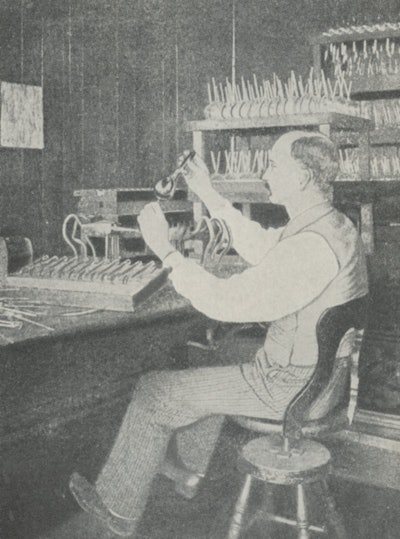 Dally was an expert at sealing off incandescent lamps.
Dally was an expert at sealing off incandescent lamps.Unfortunately, Clarence started to show some of the effects of radiation, as Edison wrote later on:
I started to make a number of these (fluorescent) lamps, but I soon found that the x-ray had affected poisonously my assistant, Mr. Dally, so that his hair came out and his flesh commenced to ulcerate. I then concluded it would not do, and that it would not be a very popular kind of light, so I dropped it.
Clarence's injuries were a result of his work on both the fluorescent lamp and the x-ray tube and were sadly typical of those seen in the pioneers. It should be realized that these injuries were entirely new and had not been seen before.
Charles and Clarence were involved in both laboratory work and the many public demonstrations that Edison presented. The first of Edison's renowned public demonstrations was in New York City in May 1896. The public was astonished by the new rays, and by passing single file in front of the fluorescent screen, people could see their bones clearly displayed. Clarence took an active part in these demonstrations.
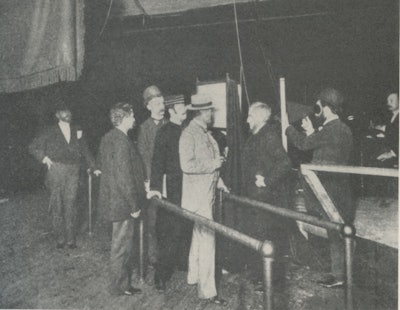 At Edison's fluoroscopic exhibition in New York City in May 1896, Dally can be seen on the extreme right-hand side.
At Edison's fluoroscopic exhibition in New York City in May 1896, Dally can be seen on the extreme right-hand side.This all resulted in radiation changes to both brothers, with Clarence being the worse affected. Part of the problem was in the use of the hand as a test object to check that the x-ray tubes were working satisfactorily, and so typically the left hand was more severely affected in right-handed people. When Clarence's left hand became reddened, swollen, and extremely painful, he switched to using his right hand for testing.
By 1900, he had severe changes in his hands and face, but he continued in his work. By 1902, the treatments that he was given were no longer effective in this previously unobserved condition. He had had pain in his left hand for almost six years, and it was now ulcerated. Skin grafts took poorly, and biopsy showed carcinoma. The left hand was amputated, and ulceration then developed in his right hand. He had several amputations of parts of his right hand, but his condition continued to deteriorate and he then had simultaneous amputations of both arms.
Nothing helped his deteriorating condition, and Clarence died from mediastinal metastatic disease in October 1904.
So why did so many pioneers continue with their work, even though they knew it was destroying them?
Sebastian Gilbert Scott described those who suffered as victims rather than martyrs, since martyrs know what is happening to them. Clarence was a victim since his sufferings were unexpected, and yet he was a martyr too because even when aware of the danger, he continued in his work.
It was said of another American pioneer martyr, Mihran Kassabian (1870-1910), that his enthusiasm for his work never faded right up to the end and despite his terrible sufferings. During the eight years of Kassabian's sufferings, he minimized any public awareness of his issues since he was concerned that the new discipline of radiology would be brought into disrepute. When Kassabian entered a hospital for his first operation, he even used an assumed name.
The full story of Clarence Dally, and many other American x-ray martyrs, was well told by Percy Brown.2
Dr. Adrian Thomas is chairman of the International Society for the History of Radiology and honorary librarian at the British Institute of Radiology.
The comments and observations expressed herein do not necessarily reflect the opinions of AuntMinnieEurope.com, nor should they be construed as an endorsement or admonishment of any particular vendor, analyst, industry consultant, or consulting group.
References
- Rahhal N. The martyr who gave us radiology: Visceral photos show the fatal wounds Thomas Edison's assistant sustained trying to help develop X-rays. Daily Mail. https://www.dailymail.co.uk/health/article-7180945/X-rays-ravaged-Thomas-Edisons-assistants-hands-killed-him.html. 28 June 2019. Accessed 6 July 2019.
- Brown P. American Martyrs to Science Through the Roentgen Rays. Charles C. Thomas Pub; 1936.






